Một chủ đề khá phổ biến và cũng được đông đảo người ôn thi IELTS quan tâm đó chính là chủ đề về mối quan hệ gia đình (family), đặc biệt là Part 1&2 trong bài thi Speaking. Nhằm giúp các thí sinh luyện nói lưu loát hơn, sử dụng từ ngữ tự nhiên và linh hoạt hơn, IELTS Lab sẽ giới thiệu một vài cụm từ liên quan đến chủ đề này nhé.
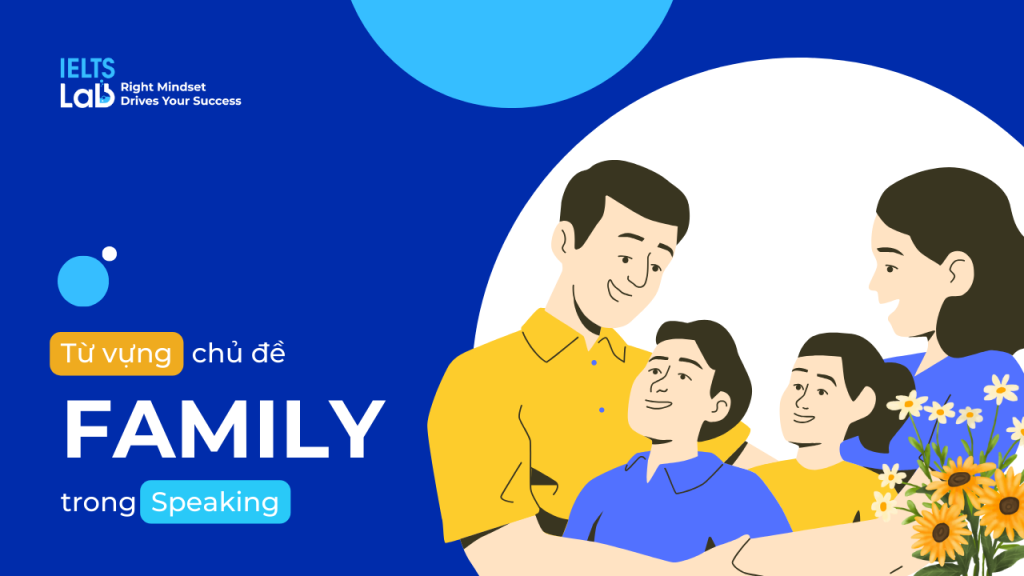
Các từ vựng về mối quan hệ gia đình
1) Child support (n): Đây là khoản hỗ trợ tài chính mà cha/mẹ không có quyền nuôi dưỡng cung cấp cho cha/mẹ có quyền nuôi dưỡng con nhằm mục đích trang trải các chi phí liên quan đến việc nuôi dạy con cái. Điều này bao gồm các chi phí về thức ăn, quần áo, chỗ ở, học tập và chăm sóc y tế.
Ví dụ: After their divorce, the judge ordered the father to pay a monthly amount in child support to help cover the expenses of raising their two children.
(Sau khi ly hôn, thẩm phán yêu cầu người cha phải trả một khoản tiền cấp dưỡng nuôi con hàng tháng để trang trải chi phí nuôi hai đứa con của họ.)
2) Common practice (n): Cụm từ này đề cập đến các chuẩn mực, kỳ vọng và hành vi được đa số cá nhân trong một nền văn hóa hoặc xã hội cụ thể chấp nhận và tuân theo. Những tập tục này có thể khác nhau giữa các cộng đồng và có thể bao gồm các khía cạnh như cách thức tán tỉnh, phong tục hôn nhân, vai trò giới tính và nghi thức xã hội. Những thực hành phổ biến thường được học thông qua xã hội hóa và giáo dục và có thể có tác động đáng kể đến cách các cá nhân tương tác với nhau và định hướng các mối quan hệ của họ.
Ví dụ: In most relationships, effective communication is a common practice that helps partners understand each other’s needs and feelings, leading to a stronger and healthier bond.
(Trong hầu hết các mối quan hệ, giao tiếp hiệu quả là một phương pháp phổ biến giúp các bên hiểu được nhu cầu và cảm xúc của nhau, dẫn đến mối quan hệ bền chặt và lành mạnh hơn.)
3) Distinguishing feature (n): Đây là một phẩm chất, đặc điểm hoặc đặc điểm độc đáo giúp phân biệt một người với những người khác và khiến họ trở nên đáng nhớ hoặc dễ nhận biết trong một mối quan hệ. Đây có thể là điều gì đó đơn giản như khiếu hài hước kỳ quặc, niềm đam mê hoặc sở thích cụ thể hoặc đặc điểm tính cách đặc biệt thu hút người khác đến với họ. Trong các mối quan hệ, những đặc điểm khác biệt này có thể giúp củng cố mối quan hệ và thúc đẩy mối liên kết sâu sắc hơn giữa các bên.
Ví dụ: The distinguishing feature of a successful long-distance relationship is consistent and open communication, as it allows partners to maintain intimacy and trust despite the physical distance.
(Đặc trwng nổi bật của một mối quan hệ đường dài thành công là sự giao tiếp cởi mở và nhất quán, vì nó cho phép các bên duy trì sự thân mật và tin tưởng bất chấp khoảng cách vật lý.)
4) Marriage of convenience (n): Kiểu hôn nhân này là sự kết hợp được thực hiện vì những lý do thực dụng, chẳng hạn như lợi ích tiền tài, địa vị hoặc lợi thế xã hội, chứ không phải vì tình yêu hay kết nối tình cảm. Nó có thể liên quan đến những cá nhân có ít hoặc không có tình cảm lãng mạn với nhau và chủ yếu bị thúc đẩy bởi các yếu tố bên ngoài. Kiểu hôn nhân này đôi khi được gọi là “hôn nhân theo hợp đồng”.
Ví dụ: When the government required foreign nationals to obtain a visa, Maria and Carlos, who were in love but from different countries, decided to get married in a marriage of convenience to allow Maria to stay in Carlos’ country legally. They hoped that one day they could overcome the obstacles and be together without the need for a visa.
(Khi chính phủ yêu cầu công dân nước ngoài phải xin thị thực, Maria và Carlos, những người yêu nhau nhưng đến từ các quốc gia khác nhau, đã quyết định kết hôn trong một cuộc hôn nhân vụ lợi để cho phép Maria ở lại đất nước của Carlos một cách hợp pháp. Họ hy vọng một ngày nào đó họ có thể vượt qua trở ngại và ở bên nhau mà không cần visa.)
5) Generation gap (n): Khoảng cách thế hệ đề cập đến sự khác biệt về giá trị, niềm tin và thái độ có thể nảy sinh giữa các cá nhân từ các thế hệ khác nhau, đặc biệt là trong bối cảnh các mối quan hệ và con người. Khoảng cách này có thể dẫn đến những hiểu lầm, xung đột, rạn nứt trong giao tiếp giữa cha mẹ và con cái, ông bà và cháu chắt hoặc các lứa tuổi khác.
Ví dụ: As the baby boomer generation approaches retirement age, many parents struggle to understand their tech-savvy adult children’s career choices and lifestyle preferences, leading to a generational gap in values and expectations.
(Khi thế hệ bùng nổ dân số sắp đến tuổi nghỉ hưu, nhiều bậc cha mẹ gặp khó khăn trong việc tìm hiểu các lựa chọn nghề nghiệp và sở thích lối sống của con cái trưởng thành am hiểu công nghệ, dẫn đến khoảng cách giữa các thế hệ về giá trị và kỳ vọng.)
6) Circle of friends (n): Cụm từ này nghĩa là một nhóm cá nhân có mối quan hệ thân thiết và có ý nghĩa với nhau.
Ví dụ: Sophie’s circle of friends has been a constant source of support and encouragement throughout her difficult time. They have been there for her through thick and thin, offering a listening ear and a shoulder to cry on.
(Tất cả bạn bè của Sophie là nguồn hỗ trợ và động viên thường xuyên trong suốt thời gian khó khăn của cô. Họ đã ở bên cạnh cô ấy lúc khó khăn nhất, sẵn sàng lắng nghe và trở thành chỗ dựa cho cô ấy.)
Ứng dụng vào đề thi Speaking
Examiner: Can you tell me about a social issue that is currently being discussed in your country?
Answer: Sure, one topic that has been gaining a lot of attention lately is child support. The government has been proposing changes to the child support system, which has sparked debates among politicians and the public. Some argue that the current system is too complex and needs to be simplified, while others believe that it should be made more generous to ensure that children from low-income families are not left behind. It’s definitely an interesting and important issue to discuss.
Examiner: Can you describe a common practice in your country that is unique to your culture?
Answer: Sure, one common practice in India that is unique to our culture is the tradition of applying henna on the hands and feet of women, especially during weddings and other special occasions. This intricate art form, known as mehndi, has been passed down through generations and is deeply rooted in Indian heritage. The designs created using henna paste are not only beautiful but also have symbolic meanings, representing love, fertility, and prosperity. It’s a fascinating tradition that adds to the vibrancy and colorfulness of Indian celebrations.
Examiner: Can you describe one of your friends? Who do you usually spend time with?
Answer: Sure, my circle of friends is quite diverse. I have a group of close friends from university who I met during my undergraduate studies. We still keep in touch and try to meet up once or twice a month for dinner or drinks. In addition, I’ve also made some new friends through work and social events. I’d say I spend most of my free time with my university friends, as we share similar interests and have been through a lot together. However, I do enjoy hanging out with my newer friends as well, as they bring a fresh perspective to my social life.
Examiner: Can you describe a characteristic that you find particularly attractive in your partner?
Answer: Absolutely. One distinguishing feature that I find incredibly appealing in my partner is their kindness and compassion towards others. They have a genuine concern for the well-being of those around them, and they go out of their way to help and support people in need. This quality is not only endearing but also inspiring, as it serves as a constant reminder to me of the kind of person I want to be. It’s a characteristic that sets them apart from others I’ve known and makes me feel incredibly fortunate to be in a relationship with them.
Examiner: Can you describe a situation where two people get married for practical reasons rather than love?
Answer: Sure, in some cultures, there’s a concept called a marriage of convenience. It’s when two individuals decide to tie the knot for practical reasons rather than love. For instance, in some cases, it could be because one partner needs a visa to live in a particular country, and marriage is the only way to obtain it. Or it could be that both partners come from wealthy families, and the marriage would benefit their families’ financial status. While love is not the primary motivation for getting married in these situations, the couple may still have respect and admiration for each other and build a happy life together.
Examiner: Can you describe any differences in values or beliefs between younger and older generations in your country?
Answer: Yes, I think there is definitely a generation gap when it comes to values and beliefs in my country. For instance, the younger generation tends to prioritize individual freedom and personal expression, while the older generation places more emphasis on traditional values and respect for authority. This can be seen in areas such as fashion, music, and social norms. The younger generation is more likely to embrace alternative lifestyles and challenge societal norms, whereas the older generation tends to adhere more strictly to traditional gender roles and family structures. However, it’s important to note that these differences are not universal and can vary widely within each generation.
Tổng kết
Với các cụm từ và ví dụ thực tiễn của đề thi trên, người đọc sẽ được trang bị thêm một bộ từ vựng và cách trả lời của các câu hỏi trong IELTS Speaking sao cho tự nhiên, trôi chảy hơn và vốn từ đa dạng hơn, tránh bị lặp và quan trọng nhất là không bị dừng lại, gây cảm giác khó chịu cho người nghe.

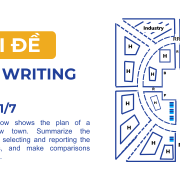



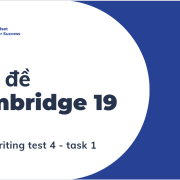
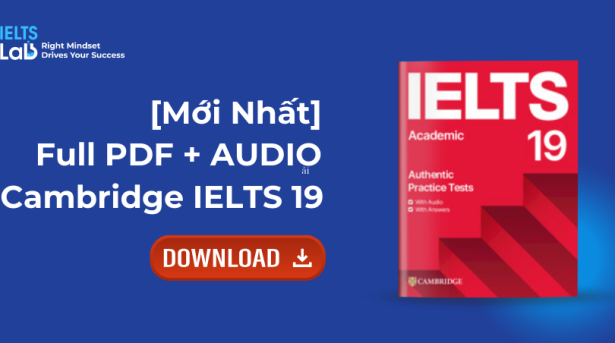


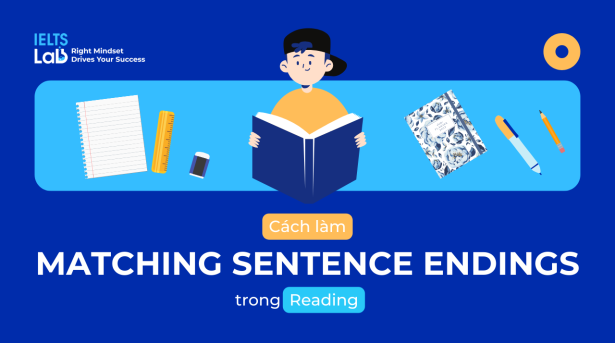



Trả lời